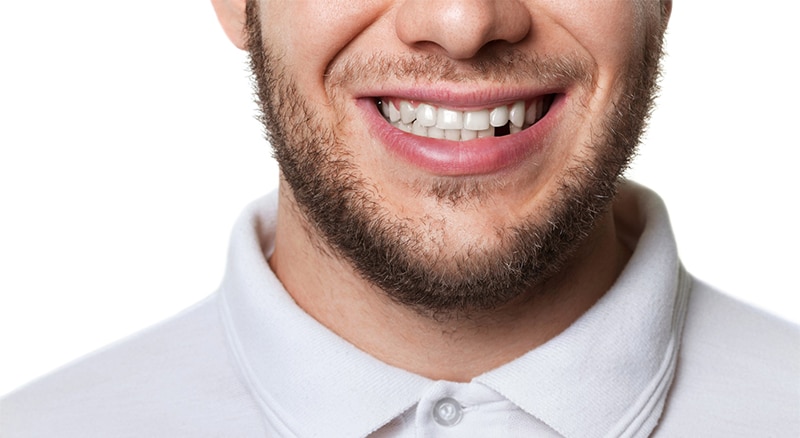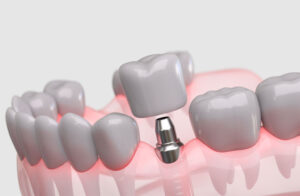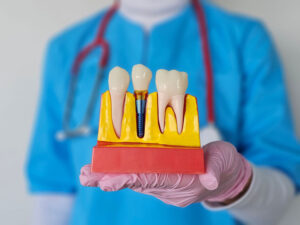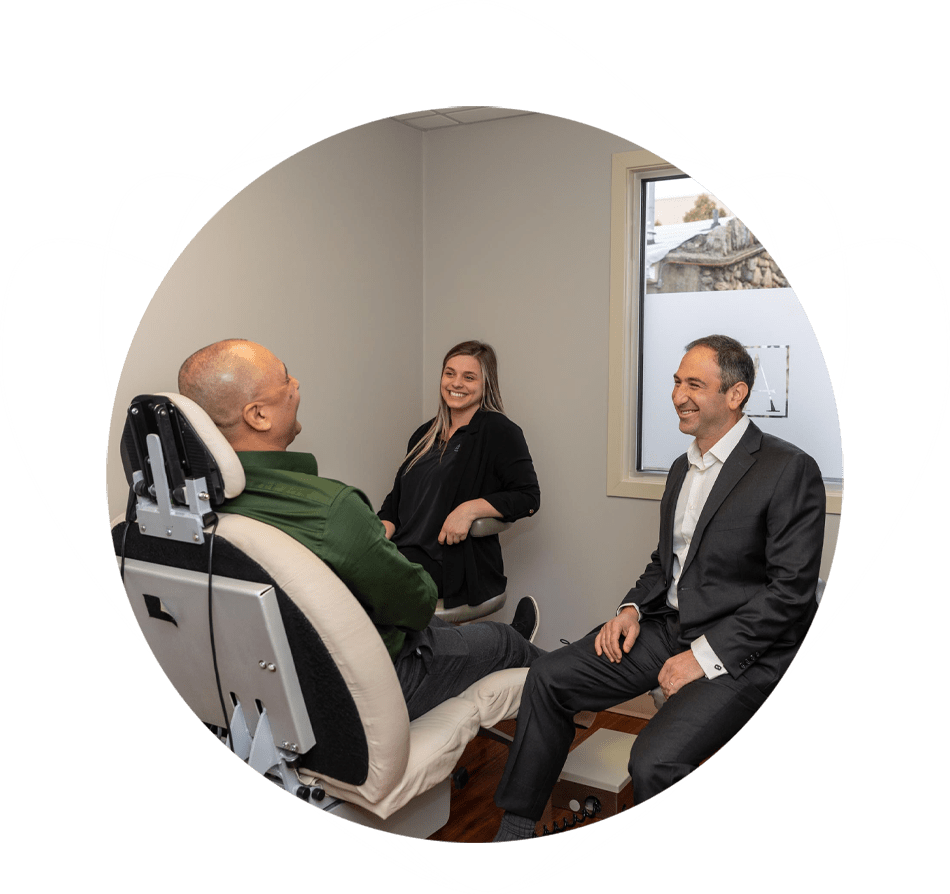Many people who want dental implants qualify as good candidates, but what if you are told you need a bone graft for your implants? Will that make your dental implants not only more expensive, but also more prone to fail?
A new study says that the survival rates for dental implants with and without a bone graft are statistically similar, but this is still a concern, and it reminds us that we should consider options that may not require a bone graft — such as All-On-4 hybrid denture implants — when possible.
What Is The Dental Bone Graft Success Rate?
This study looked only at dental implants placed in pure native bone compared to those placed following a separate bone graft procedure. Excluded from the study were bone grafts done to preserve the socket at the same time as the implant was placed. The study was large in terms of patients, implants, and in time. Over 1200 patients who received over 2700 dental implants from 1985 to 2012 were included in the study.
The five-year survival rate for implants placed in natural bone was 92%, compared to only 90% for implants placed with bone graft. Ten-year survival rates were much lower, only 87% for implants placed in native bone without any grafting and 79% for implants placed with a bone graft.
Two things to note. First, this is much lower than most survival rates we’ve seen in long-term studies, which are typically much higher than 90% at ten years and in some cases as high as 93% at 17 years.
Second, although the survival rate is much lower for implants placed with a bone graft, researchers said the difference was not statistically significant. The lack of significance might be related to the fact that most implants were placed toward the end of the study and had short follow-up times, which means that the statistical accuracy of the 10-year survival rate is not very good.
Researchers linked failure to other factors, however. They found that patients who followed a professional maintenance program lowered their risk of implant failure by 80%, while smokers increased their risk of failure by 2.6 times.
2023 Updated Bone Graft Success Rates
Recently, a new study has came out re-examining the success rate of Bone Grafts for Dental Implant Success (Comparative Bone Graft Evaluation for Dental Implant Success: An Evidence-Based Review – PubMed (nih.gov)). This examination took 41 individual studies of bone graft material & success rates and combined the data together.
This analysis took a look at the different types of bone grafts can be utilized in a dental implant surgery, each serving a specific purpose:
- Autologous block grafts involve taking a small piece of bone from another area of your body, such as the chin or the hip, and placing it in the implant site.
- Composite grafts combine different graft materials to optimize bone regeneration.
- Blood derivatives, such as platelet-rich plasma (PRP) or platelet-rich fibrin (PRF), are derived from your own blood and contain growth factors that promote healing and tissue regeneration.
- Xenografts and particulate grafts are derived from animal sources or synthetic materials that provide a scaffold for new bone formation.
After analyzing the results, the study found that autologous block grafts, composite grafts, and blood derivatives were the most commonly used grafting materials, showing success rates ranging from 80.9% to 91.5% and survival rates from 94.2% to 96.7% after a follow-up period of 1 to 5 years.
Xenografts and particulate grafts, on the other hand, exhibited a remarkable 100% success and survival rate. It’s important to note that while these findings are promising, more research is needed to fully understand the long-term impact of xenografts and particulate grafts on dental implant success.
When considering dental implant surgery, it is crucial to consult with a qualified dental professional who can assess your specific needs and recommend the most suitable bone grafting approach. They will consider factors such as your oral health, bone quality, and overall medical condition to determine the optimal grafting material for your case.
By utilizing the right grafting technique, your dentist can significantly enhance the success and longevity of your dental implants, helping you achieve a beautiful and functional smile.
All-On-4 Full Mouth Implants Can Help Avoid Bone Grafts
Looking at the survival rates in these studies might make you want to try to avoid bone grafts for your future dental implant procedures. And other studies have found even higher risks related to bone grafts, showing they might be associated with a 5 times higher rate of implant failure.
Although it’s not always possible to avoid bone grafts with dental implants, we are happy to offer an option that can let you replace all your teeth without the need for a bone graft in most cases. The All-on-4 implant denture is a remarkable dental implant technology that uses engineering to maximize your native bone. Most people who get All-on-4 dentures don’t need a bone graft.
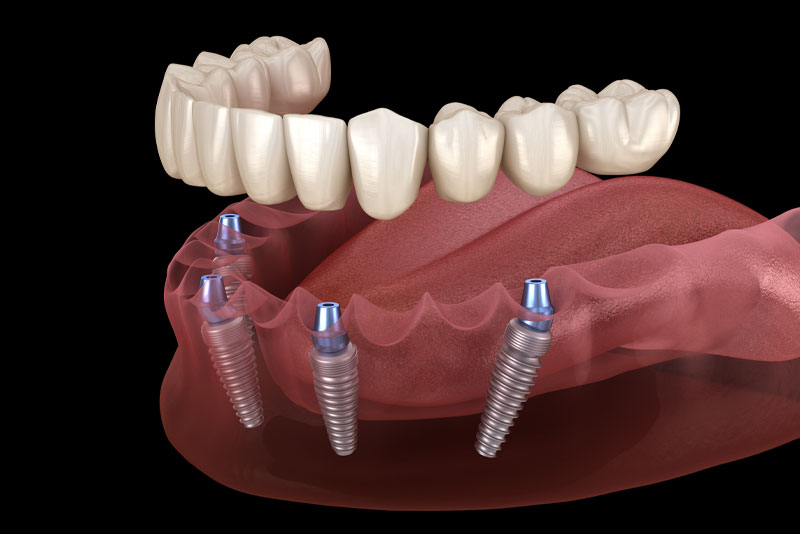
How Does All-On-4 Work?
All-On-4 is a hybrid denture technology that situates a denture-like device made from ceramic materials named “zirconia” atop four dental implant posts. These posts are placed in specific locations to avoid bone decay and maximize the potential for strength and comfort for over seven and a half years. That is the average lifespan of each device with approximately 98% of every All-on-4 device lasting until then.
All-on-4 offers a great way for those who may have been denied a traditional full-arch of dental implants but are not excited about dentures. Dentures offer issues such as slippage which are not possible with the All-on-4. It’s as close to a full-arch replacement with dental implants without a full slew of dental implants as you can get. Better yet, it is often cheaper than a full-arch replacement.
Are You Looking For An All On 4 Expert?
– Before Felix had his dental implants done at Advanced Dentistry, he was facing major problems. Total discoloration of his teeth, every single one had different colors. As always, Dr. George discussed the different options available to alleviate his situation. The option Felix chose was a full upper arch restoration supported by implants.
All-on-4 Implants In Moghen Lake New York
If you would like to learn more about All-on-4 implant dentures, please call (914) 526-2144 for an appointment with a Westchester County implant dentist at Advanced Dentistry of Mohegan Lake. Our doctors, George Sepiashvili and Wanda Mejia, have been expertly trained in placing All-on-4 dental implants in our office by Mohegan Lake, NY as well as many other options you have for your situation.
Let us help you avoid bone grafting and find a solution that can work for you and last for years to come!
